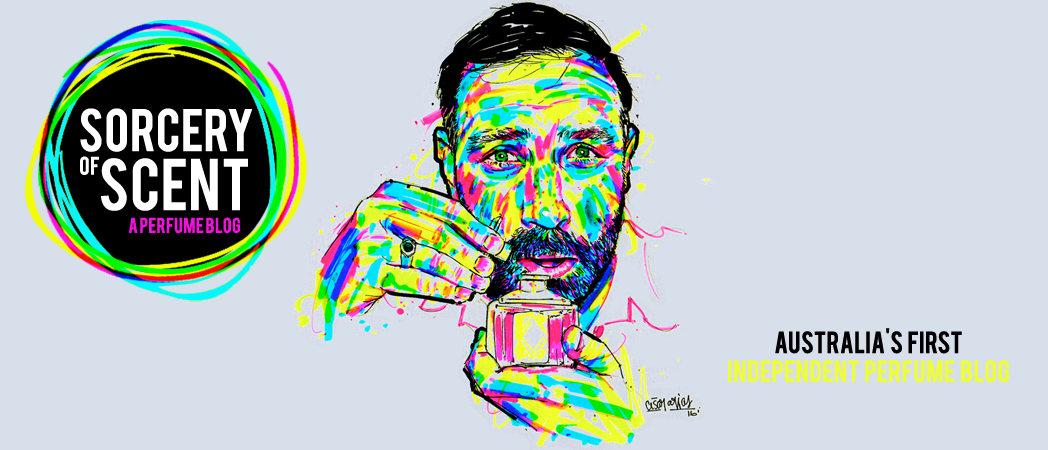 This year Sorcery of Scent is pleased to be a part of the 2010 End-of-Year blogging event in which 14 avid blogs revisit the year that was and hand out gold stars for the scents that impressed, and red crosses for those that failed to come close.
This year Sorcery of Scent is pleased to be a part of the 2010 End-of-Year blogging event in which 14 avid blogs revisit the year that was and hand out gold stars for the scents that impressed, and red crosses for those that failed to come close. (Be sure to visit the full list of participating perfume blogs at the bottom of this post).
Here are my picks for 2010...











Most desirable Flacon of the Year: L'Abeille de Guerlain
Yes, it costs an arm and a leg, but who can argue that the spectacular bee-shaped Baccarat crystal flacon limited to only 47 pieces worldwide isn't just the bees knees? Je l'adore!

Niche Perfume of the Year - Womens: Fleur Nocturne - Isabey
Honouring their rich heritage well into the 21st century, Isabey have epitomised ageless charm and timeless sophistication with this lavish spin on their early 19th century classic 'Bleu de Chine'.

Niche Perfume of the Year - Mens: Cuir - Mona di Orio
Effectively a unisex release, Mona di Orio's Cuir is a brawny, balsamic take on leather which is sensuous, bold and commanding. Its woody, smokey quality makes for a resolutely rugged scent with animalic undertones.

Niche Perfume of the Year - Unisex: Pink Quartz - Olivier Durbano
Durbano's inspired spicy chypre Pink Quartz appeals to both men and women... its delicate rose heart is piquant with fragrant saffron and Somali oliban. It had tongues wagging all over Esxence.
Runner Up: Opus III - Amouage

Designer Perfume of the Year - Womens: Idylle EDT - Guerlain
Thierry Wasser's new eau de toilette version of 2009's Guerlain release Idylle is a gorgeous floral focusing on the Bulgarian rose facets of the original. Spirited, lively, sexy. A winner in my book.

Designer Perfume of the Year - Mens: 10th Anniversary Fragrance - John Varvatos
Citrus, cinnamon, precious woods and leather seen through a swirling incense smokescreen make JV's 10th Anniversary Fragrance an assertive and powerful mainstream release. As a 2010 limited edition, get it before its gone.

Designer Perfume of the Year - Unisex: Wonderwood - Comme des Garcons
Quirky yet classy, Wonderwood crammed every possible wood accord into one bottle, and still managed to create something understated, sophisticated, and very avante garde. Two thumbs up!

Best Reformulation of the Year: Onda EDP - Vero Profumo
The lavish old-world atmosphere of Onda extrait has not been lost in this brand new eau de parfum incarnation. In 2010, Vero Kern tweaked the topnotes in the EDP to add more infinite depth and character. 10/10!

Worst Reformulation of the Year: Opium - Yves Saint Laurent
Booooo! Hisssss! L'Oreal have destroyed an old classic. Not only does the new flacon look cheap and tupperware-like, the new Opium formula is now a sad shadow of its former self. Yves must be turning in his grave. Unforgivable!

Best Emerging Luxury Brand: XerJoff
XerJoff went from strength to strength in 2010 as they expanded their portfolio of exceptionally crafted fine fragrances. Superb craftsmanship, quality materials and meticulous attention to detail have catapulted them into the stratosphere.
On a personal Note...
This year I had the pleasure of truly discovering the house of Guerlain. It has been an infinitely rewarding experience, and one that I feel will be ongoing.
On the whole I probably spent much more money than I should have, and much more time on the internet than perhaps my family might have liked; but as Sorcery of Scent steps over the threshold and into its 4th year, I would like to thank YOU - the reader - for your valued readership, contributions, comments and support. You make what I do worth the effort and the time spent in this noisy swivel-chair!
Happy New Year! Many rewards and blessings be with you in 2011.
Dimitri.
Check out the other participating blogs by clicking on the following links:
I Smell Therefore I Am, Scent Hive, The Non Blonde, Smelly Blog, Roxana Illuminated Perfume, DSH Notebook, EauMG, A Rose Beyond the Thames, All I Am A Redhead, Schreibman's Live, Portland Fragrance Examiner, CaFleureBon, Persolaise





